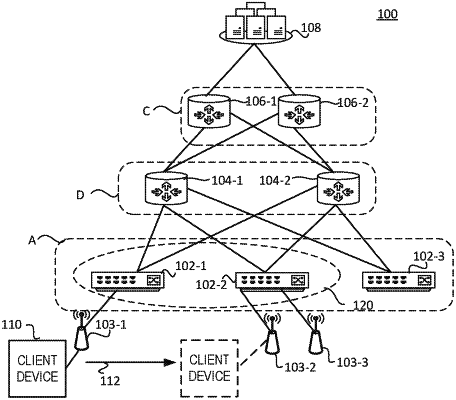| CPC H04W 4/08 (2013.01) [H04L 45/16 (2013.01); H04L 45/66 (2013.01); H04W 36/18 (2013.01); H04L 12/189 (2013.01); H04W 84/12 (2013.01); H04W 88/08 (2013.01)] | 20 Claims |

|
1. A wired network device comprising:
a processor; and
a non-transitory, computer-readable medium including instructions that, when executed by the processor, cause the wired network device to:
receive a first join message originating from a client device, wherein the client device is associated with a first wireless access point (WAP) connected to another wired network device, wherein the wired network device and the other wired network device is configured in a broadcast domain and the first join message is forwarded on the broadcast domain by the other wired network device, wherein the first join message is indicative of a request of the client device to join a multicast group;
create, based on the first join message, an entry corresponding to the client device in a remote receiver record of the wired network device, wherein the entry is indicative of an intent of the client device to join the multicast group, the entry including a network identifier of the broadcast domain, a network address of the client device, and a media access control (MAC) address of the client device linked to a network address of the multicast group;
in response to the client device transitioning from the first WAP to a second WAP connected to the wired network device, determine that the client device is locally connected to the wired network device;
identify, based on the entry in the remote receiver record, that the client device on the broadcast domain intends to receive multicast traffic of the multicast group;
generate, based on the network address of the client device, a second join message directed to the network address of the multicast group;
distribute the second join message in the broadcast domain; and
configure, based on the second join message, a traffic flow path for the multicast traffic of the multicast group via the wired network device and the second WAP to the client device.
|